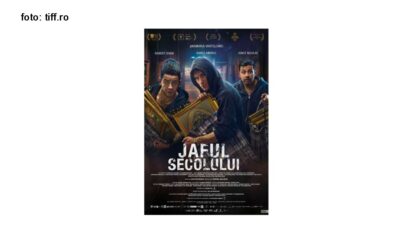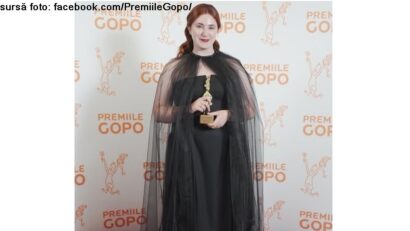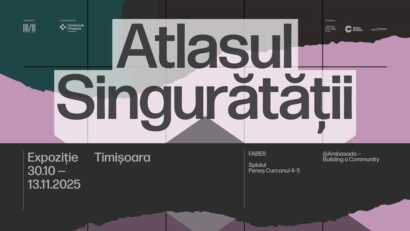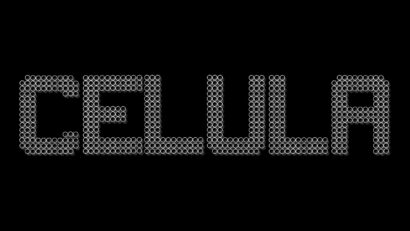Award-winning fine artists Lia and Dan Perjovschi
The European Cultural Foundation in late March awarded the Princess Margriet Prize to Romanian fine artists Lia and Dan Perjovschi and to the Israeli-born German-resident conductor Yoel Gamzou. The awarding ceremony was hosted by Brusselss Egg Cultural C

Corina Sabău, 03.08.2013, 14:14
Handing in the prize was Her Royal Highness Princess Margriet of the Netherlands. Giving the opening speech was Her Royal Highness princess Laurentien of the Netherlands, while Princess Astrid of Belgium attended the event. “This year’s winners have compelled us to take a critical look at our past as well as at the future. So, they have prompted and challenged us to draw out a new set of parameters, a new mental map of a more open Europe, at once more democratic and more comprehensive”, said Her Royal Highness Princess Laurentien in the opening speech.
With details on the award, here is Dan Perjiovschi: “It is a European recognition of an activity we have been conducting at home in Romania. Apart from the sheer individual value of each of us, mine and Lia’s, the prize rewards our joint work, which is not only about art as such, but also about how to communicate art. My wife Lia has created a debate platform under the heading Contemporary Art Archives. And the motivation for the prize makes mention of that aspect as well, reminding everyone of the social impact and of the way our art and activity can influence the way the world and Europe are perceived. Our choice to stay in Romania is another key aspect. In other words, we scooped a prize awarded by the Dutch because we stayed in Romania, and it was a decision we took at a time when most leading artists relocated to the great European capitals.”
Through his art, Dan Perjovschi describes himself as having a marginal status. However, he thinks that his and Lia Perjovschi’s position have statement value. Specifically, that means being careful about where you display your work, what the overall cultural background is, and last but not least, Dan Perjiovschi jokingly said, for whom you design T-shirts, free of charge. For instance, it has been ten years now since the National Contemporary Art Museum was founded on the premises of the former People’s House, a building erected at the initiative of Romania’s former communist dictator Nicolae Ceausescu, and which at present is home to the Palace of Parliament. Dan And Lia Perjovschi have since turned down any cooperation offer with that institution. Speaking about his drawings, Dan Perjovschi thought that at the beginning they were more poetic, more elaborate, more refined. Romania’s present-day history, with its miner riots, with Ion Iliescu’s term in office as the country’s president, with the war in Iraq, changed those drawings, made them simpler.
Speaking again is Dan Perjovschi: “The artistic language that I use is a marginal one, it is some kind of drawing which looks like a caricature, whereas in fact it isn’t. At any rate, when you place a caricature next to a painting, people will think only the painting is a form of art, since that’s how they had been taught to view it. But I say that is not true, anything can be a form of artistic communication and anything can convey an aesthetic or a political message. It all depends on how you phrase it. And my wife Lia does the same. She creates some sort of “temporary institutions” in the exhibition room. And those institutions are not necessarily artistic, quite a few of them have something to do with science, others with communication, these are very interesting demonstrations. I might even say we as artists are part of a group of artists who want to turn things upside down, to walk a path which is well off the beaten track, to transform the world of museums. We no longer want the museum to be that particular area we dress up for and where we step only on Sundays. On the contrary, we want the museum, that artistic province, to be something we visit every day, to be part and parcel of our lives.”
Dan Perjovschi drew in great museums around the world, covering large surface areas of walls with tales about the world we live in. Dan Perjovschi and the “22 Magazine” are tied by a friendship that has lasted for more than two decades now; the artist has been collaborating with the magazine ever since it has been founded. “Everything is a drawing and can be a drawing“, the artist said. Perjovschi managed to express himself in areas where the freedom of expression has been sanctioned. “Any culture can be stigmatized straight away. But I’m not interested in that. What I’m interested in is to be able to understand certain things. In the United Arab Emirates, where men can have four wives, I made a drawing where the white-dressed Arab said: “Give me five!”
Speaking again is Dan Perjovschi, this time about similar experiences: “I’ve been to Cuba, I’ve been to China, I even went as far as Moscow, where there are restrictions regarding the freedom of expression and where you are told bluntly you can criticize everything, except for the Orthodox Church. I’ve been to areas facing problems, but I made my drawings in such a way that I could create an area of reflection. As for my work for the “22” publication, I didn’t waste any time doing politics. For me “Magazine is more than a publication, it is more of a springboard. It was like a traveling exhibition that reached people’s homes. For me, the drawings there are like snapshots of everyday moments,, of some very intelligent texts written by intelligent people, that is why in time my drawings have become intelligent as well. And my drawings sum up some key ideas I borrowed from politics,. That ‘s what I usually do when I create a wall installation anywhere around the world”.
At the awarding ceremony for the Princess Margriet prize, in her Laudatio, Kristine Stiles, a professor with Duke University who has been working with the Perjovschis for the past two decades, said: “Enjoying international recognition for their originality, for their indomitable authenticity, dignity and integrity and for having completely dedicated their life to art and society, Lia and Dan Perjovschi have become the ideal ambassadors of European culture, citizens of the world who have changed the way in which art’s ultimate aim is perceived in society”.






























